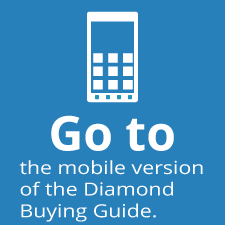Precious Metals Guide
Gold Quality
Gold's purity is measured in karats. The term "karat" harks back to the ancient bazaars where "carob" beans were used to weigh precious metals. 24 karat is pure gold, but its purity means it is more expensive and less durable than gold that is alloyed with other metals. Different alloys are used in jewelry for greater strength, durability and color range.
The karatage of the jewelry will tell you what percentage of gold it contains: 24 karat is 100 percent, 18 karat is 75 percent, and 14 karat is 58 percent gold. When comparing gold jewelry, the higher the number of karats, the greater the value.
Europeans have long embraced 18-karat gold as their metal of choice, and with good reason. Its rich yellow color, luxurious look and feel have an extraordinarily sensual appeal; many European women treat 18-karat gold like a second skin, even wearing it to the beach!
Today, women in the U.S. and around the globe are "trading up" and treating themselves to the beauty and opulence of 18-karat gold.
Karat Marks
When buying gold jewelry, always look for the karat mark. All other things being equal, the higher the karat, the more expensive the piece. In the United States, 14-karat gold, or 583 parts pure gold, is the most common degree of fineness. Nothing less than 10 karats can legally be marked or sold as gold jewelry in the U.S. However, lower karatages, such as 8-karat gold and 9-karat gold, are popular in other countries.
18-karat gold is 18/24ths, or three-quarters pure gold, and jewelry of this fineness is marked 18k or 750, the European designation meaning 75% gold.
Always look for the karat mark or "k" that appears on the back of the piece. By U.S. law, if a karat mark appears you should also see the manufacturer's trademark to assure you that the karat marking is accurate. The country of origin should also appear.
In addition to the karat mark, every piece of gold jewelry should be stamped with a hallmark or trademark of its maker, and sometimes its country of origin. These designations assure you that you are buying genuine karat gold jewelry. Heavier pieces contain more gold.
Gold Types
Gold Filled, also called Gold Overlay, refers to a layer of at least 10-karat gold that has been permanently bonded by heat and pressure to one or more surfaces of the support metal, then rolled or drawn to a prescribed thickness. The karat gold must be at least 1/ 10 of the total weight.
Gold Plate means that a layer of plating of 10-karat gold or better has been bonded to a base metal. The karat gold content may be less than 1/20, but it must be properly identified by weight in terms of total metal content.
Gold Leaf is just gold plating that's been pounded and applied by hand.
Gold Colors
 Yellow gold is alloyed with silver and copper. It is the most frequently used type of gold there is. Malleable, ductile, and generally non-corrosive, it has a high melting point and is not susceptible to compression.
Yellow gold is alloyed with silver and copper. It is the most frequently used type of gold there is. Malleable, ductile, and generally non-corrosive, it has a high melting point and is not susceptible to compression.
 White gold is alloyed with a large percentage of silver, or a selection of other white metals. The percentage of gold naturally varies, according to the amount of other metal used. White gold is highly reflective and not subject to tarnish. The ancient term for it was Electrum. Its use predates that of Palladium and Platinum.
White gold is alloyed with a large percentage of silver, or a selection of other white metals. The percentage of gold naturally varies, according to the amount of other metal used. White gold is highly reflective and not subject to tarnish. The ancient term for it was Electrum. Its use predates that of Palladium and Platinum.
 Rose gold is alloyed with copper, and perhaps silver. The proportions are about one part of copper to three parts of 24-karat gold.
Rose gold is alloyed with copper, and perhaps silver. The proportions are about one part of copper to three parts of 24-karat gold.
Gold Pricing
Gold pricing is based on a number of factors, including karatage, gram weight, design and craftsmanship. The karatage and gram weight tell you how much gold is in a piece, but don't rely on these alone to determine price. Remember, a price based solely on gram weight does not reflect the work that has gone into the piece.
Other important factors to consider are the jewelry's construction and design. The techniques of construction can make a piece more durable and flexible for added comfort. A well-made piece in a classic design will give you years of wear and enjoyment and, if cared for properly, will last a lifetime. Unique design, intricate details, gemstones or a special clasp may add to the price.
Gold jewelry is mainly produced by machine. Any additional hand finishing or textural interest raises the cost. Similar looking pieces may have vastly different price tags. This is because different pieces may have specific characteristics that make them unique. So look carefully to notice any differences and similarities. Often, it's these small details that give you pleasure through the years that you enjoy a piece of jewelry, and ensure that your children will also enjoy it.
Gold Care
Gold is durable, sturdy, dependable, and makes an ideal setting for your precious diamond jewelry. However, to get a lifetime of enjoyment from your jewelry, be sure to keep it clean and safe.
Do not wear jewelry during rough work or when handling harsh chemicals.
Store it in a fabric-lined box away from other pieces to preserve it from getting scratched.
Finally, check the diamond settings periodically for any damage to the gold prongs or bezels. If you see a loose prong, or if the setting looks out of line, bring it to a professional jeweler for repair at once.
|

|


